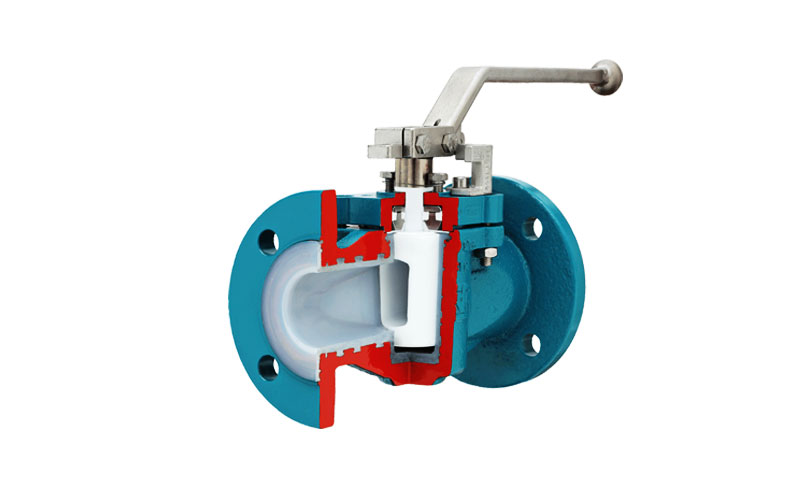1. 소개
플러그 밸브 격리용으로 널리 사용되는 다목적 쿼터턴 밸브입니다., 전환, 산업 시스템의 간헐적인 제한.
밸브 본체 내에서 회전하는 원통형 또는 원추형 플러그와 같은 단순한 디자인으로 빠른 작동이 가능합니다., 낮은 압력 강하, 견고한 신뢰성.
원리 이해, 재료, 성능 지표, 고압에 적합한 밸브를 선택하려면 산업 응용 분야가 필수적입니다., 연마제, 또는 공간이 제한된 서비스.
2. 플러그 밸브 란??
에이 플러그 밸브 흐름 차단을 위한 산업용 배관 시스템에 널리 사용되는 특수한 1/4 회전 로터리 밸브입니다., 전환, 그리고 가끔 제한.
핵심 작동 원리는 다음과 같습니다. 원통형 또는 원추형 플러그 밸브 본체 내에 수용됨, 무제한 흐름을 위해 내부 포트를 파이프라인과 정렬하거나 통로를 완전히 차단하기 위해 회전합니다..
이 간단하면서도 견고한 메커니즘으로 신속한 90° 작동이 가능합니다., 중요한 애플리케이션에서 효율성과 신뢰성을 모두 제공.
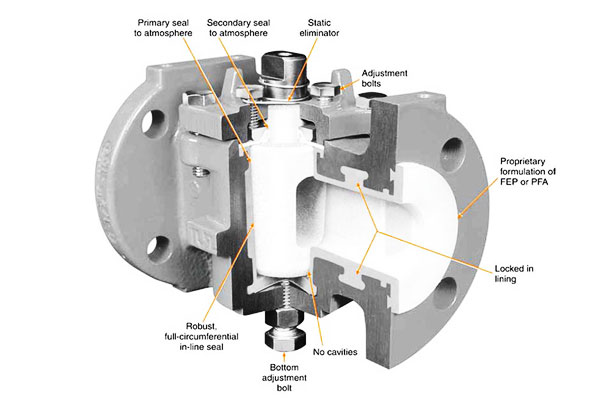
핵심 기능
- 1/4회전 작동
빠른 작동 (일반적으로 90°) — 비상 격리에 이상적, 신속한 온/오프 조치가 필요한 전환기 임무 및 애플리케이션. - 단순한, 방해가 적은 흐름 경로
전체 포트 구성은 압력 강하를 최소화하면서 사실상 파이프 보어 흐름을 제공합니다.; 감소된 포트 옵션은 더 낮은 토크와 비용을 위해 흐름 용량을 교환합니다.. - 다중 포트 구성
둘-, 삼- 4방향 플러그 배열로 전환이 가능함, 혼입, 여러 밸브 없이 샘플링 및 복잡한 라우팅. - 씰링의 다양성
사용 가능 금속 대 금속 고온/연마 서비스용 시트, 탄력성 (ptfe/rptfe, 엘라스토머) 완벽한 차단 및 낮은 토크를 위한 시트, 또는 윤활 더럽거나 부식성 매체에서 시트 수명을 연장하는 시스템.
3. 설계에 따른 플러그 밸브 분류
플러그 밸브는 다음을 기준으로 분류됩니다. 기계 디자인, 밀봉 방법, 및 흐름 구성.
이러한 분류를 이해하면 엔지니어가 압력에 적합한 밸브를 선택하는 데 도움이 됩니다., 온도, 흐름, 및 서비스 요구 사항.
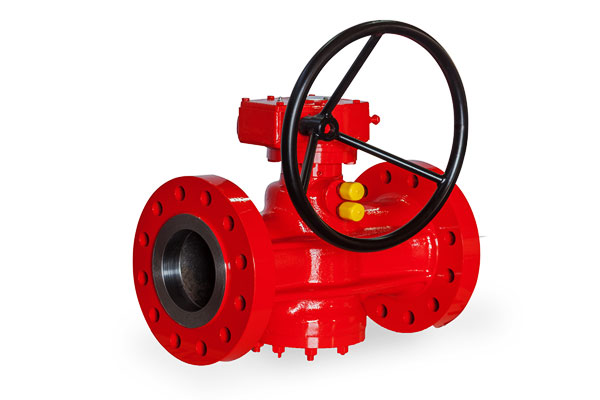
플러그 유형 기준
| 유형 | 설명 | 장점 | 일반적인 응용 프로그램 |
| 원통형 플러그 밸브 | 직선형 원통형 플러그가 일치하는 체강 내부에서 회전합니다.; 가장 단순한 디자인. | 콤팩트, 비용 효율적입니다, 낮은 압력 강하. | 물, 가스, 저압 화학 라인. |
| 원뿔형 (테이퍼형) 플러그 밸브 | 더 견고한 밀봉을 위해 본체에 원뿔형 플러그가 고정됨. | 우수한 밀봉; 더 높은 압력과 온도를 처리. | 석유 화학, 기름 & 가스, 증기선. |
포트 구성 기준
| 포트 유형 | 설명 | 장점 | 일반적인 응용 프로그램 |
| 포트를 통해 (전체 포트) | 포트가 파이프라인 직경과 일치함; 바로 이어지는 흐름 경로. | 최소 압력 강하; 고유량 용량. | 대량 유체 운송, 파이프 라인, 슬러리 취급. |
| 축소된 포트 | 파이프 보어보다 작은 포트. | 낮은 작동 토크; 비용 효율적인. | 중간 흐름 시스템, 악기 라인. |
| 멀티 포트 (삼- 또는 4방향) | 흐름 전환 허용, 혼입, 또는 여러 포트를 통한 샘플링. | 여러 밸브를 교체합니다.; 유연한 라우팅. | 견본 추출, 전환자 의무, 화학 반응기. |
플러그 지원 기반
| 지원 유형 | 설명 | 장점 | 제한 |
| 플로팅 플러그 | 플러그는 좌석 사이에 위치하며 자유롭게 회전합니다.. | 자가 정렬; 간단한 구조. | 대형 사이즈에서 더 높은 토크; 제한된 고압 사용. |
| 트러니언 장착형 플러그 | 상단 및/또는 하단 베어링으로 고정된 플러그. | 작동 토크 감소; 고압 또는 대형 응용 분야에서 안정적. | 더 복잡한 디자인; 더 높은 제조 비용. |
씰링 디자인 기반
시트 수명 연장; 더럽거나 부식성 유체에서 원활한 작동.
정기 유지 보수; 위생 용도에는 적합하지 않음.
라이머 시트는 견고한 밀봉을 제공합니다..
| 씰링 유형 | 설명 | 장점 | 제한 |
| 금속 대 금속 | 단단한 시트가 플러그에 직접 접촉함. | 고온, 고압, 연마 서비스. | 더 높은 토크가 필요함; 윤활 없이 마모될 가능성. |
| 탄력있는 좌석 (ptfe, rptfe)
</TD> |
엘라스토머 또는 포 | 낮은 토크; 완벽한 차단; 화학 저항. | 제한된 온도 범위; 공격적인 매체로 인한 성능 저하 가능성. |
| 루브르 |
4. 플러그 밸브의 주요 구성 요소 및 재료
플러그 밸브의 성능, 내구성, 특정 응용 프로그램에 대한 적합성은 해당 응용 프로그램에 따라 다릅니다. 구성 요소 및 재료.
각 부품은 압력을 견딜 수 있도록 설계되었습니다., 온도, 부식, 원활한 작동과 누출 방지 밀봉을 보장하면서 침식을 방지합니다..
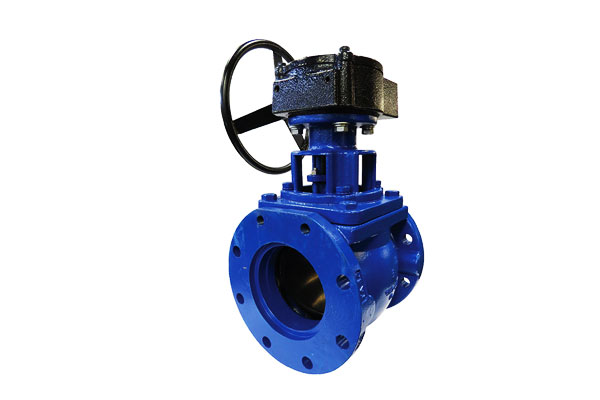
주요 구성품
| 요소 | 설명 | 기능 |
| 밸브 본체 | 플러그와 포트가 포함된 외부 하우징. | 압력 부하를 지원합니다., 흐름 경로를 제공합니다, 그리고 파이프라인에 연결. |
| 플러그 | 하나 이상의 포트가 있는 원통형 또는 원추형 회전 요소. | 포트를 정렬하거나 차단하여 흐름을 제어합니다.(에스); 기본 흐름 제어 요소. |
| 좌석 | 플러그가 밀봉되는 금속 또는 탄성 표면. | 완벽한 차단을 보장하고 장기간 밀봉 무결성을 유지합니다.. |
| 줄기 / 핸들 | 플러그를 회전시키는 데 사용되는 샤프트 또는 레버. | 수동 또는 자동 액추에이터에서 플러그로 토크를 전달합니다.. |
| 윤활유 챔버 (선택 과목) | 플러그와 본체 사이에 윤활유가 채워진 저장소 (윤활 플러그 밸브용). | 마찰 감소, 좌석 수명 연장, 마모나 부식을 방지합니다.. |
| 문장 / 트러니언 (트러니언 장착 플러그용) | 플러그 상단 및/또는 하단 지원. | 작동 토크를 줄이고 대형 또는 고압 밸브의 플러그를 안정화합니다.. |
| 선 / 포장 | 스템 또는 핸들 인터페이스 주변의 밀봉 요소. | 줄기/손잡이를 따라 누출을 방지합니다.; 부드러운 회전이 가능합니다. |
재료 선택
| 요소 | 전형적인 재료 | 주요 속성 |
| 몸 & 보닛 | 탄소강 (A216 WCB), 스테인레스 스틸 (304, 316), 이중, 합금 20, 니켈 합금 | 힘, 부식 저항, 온도 내성 |
| 플러그 | 몸체와 동일하거나 표면이 단단함 (스텔 라이트, 화장실 오버레이) | 내마모성, 치수 안정성, 화학적 호환성 |
| 좌석 | 금속 (스텔 라이트, 모넬), ptfe/rptfe, UHMWPE | 밀봉 견고성, 화학 저항, 낮은 마찰 |
| 줄기 / 핸들 | 스테인레스 스틸, 합금 강철 | 힘, 비틀림 강성, 부식 저항 |
| 윤활유 | 미네랄 오일, 합성 그리스, 또는 FDA 승인 윤활제 | 마찰을 줄이고 윤활 밸브의 부식을 방지합니다. |
5. 흐름 특성 및 유압 거동

흐름 능력 (CV) — 일반적인 범위
- 소형 기기 크기의 플러그 밸브 (¼ – 1) 있을 수 있다 이력서 ~ 0.1–5.
- 일반적인 프로세스 크기 (2–6) 일반적으로 범위 이력서 ~ 5–200 포트 디자인에 따라 (전체 포트 대. 감소된 포트).
- 대구경 플러그 밸브 (8+) 매우 높은 Cv 값을 달성할 수 있습니다., 볼 밸브와 비슷하며 동일한 크기의 글로브 밸브를 능가하는 경우가 많습니다..
압력 강하 및 조절
- 플러그 밸브는 주로 다음 용도로 설계되었습니다. 온/꺼짐 또는 전환기 서비스.
제한에 사용될 수 있지만, 그들은입니다 덜 이상적 잠재적인 비선형 흐름 특성과 높은 ΔP에서 스로틀링 시 시트 마모로 인해 정밀한 변조가 가능한 글로브 밸브보다. - 압력 강하는 유량에 따라 증가하고 포트 크기에 따라 감소합니다.; 높은 ΔP 서비스에는 특수 트림이 필요합니다. (다단계 또는 감압 플러그) 소음과 침식을 방지하기 위해.
6. 성능 지표 및 클래스
| 메트릭 | 일반적인 관심사 / 범위 |
| 압력 등급 | ANSI 150–2500 공통; 단조 디자인으로 더 높이 |
| 온도 범위 | 극저온 (적당한 재료로) 일반 합금의 경우 최대 400–600°C; 특수 합금으로 범위 확장 |
| 누출 | 금속 좌석: 누출이 적으나 모든 경우에 기밀하지는 않음; 탄력있는 좌석: 거품이 없는 (누출이 거의 없음) |
| 사이클 수명 | 윤활 금속 시트: 깨끗한 서비스로 장수; 탄력있는 좌석: 수천~수만 사이클 |
| 비산 배출 | 벨로우즈로 완화, 활하중 포장, 및 규격을 준수하는 스템 씰 |
| 표준 & 테스트 | 쉘/시트 압력 테스트, 시트 누출 테스트, 중요한 부품에 대한 NDT (방사선 촬영, MPI) |
7. 플러그 밸브 제조 공정
플러그 밸브 제조에는 정밀한 작업이 필요합니다. 주조, 가공, 집회, 그리고 테스트 내구성을 확보하기 위해, 누출 방지 밀봉, 다양한 산업 조건에서 안정적인 작동.

본체와 플러그의 주조 또는 단조
밸브 본체와 플러그 플러그 밸브의 구조적 핵심을 형성합니다.. 그들은 다음을 통해 생산될 수 있습니다.:
- 모래 주조: 매체에 대한 공통- 대형 밸브까지. 복잡한 형상에 유연성 제공, 다중 포트 본체 포함, 트러니언 지원과 같은 내장 기능을 허용합니다..
주조 후 열처리로 잔류 응력 감소. - 투자 캐스팅 (잃어버린 왁스): 탁월한 치수 정확성과 매끄러운 표면 제공, 공차가 엄격한 정밀 밸브 또는 소형 밸브에 이상적.
- 단조: 밀도가 높습니다, 고압 또는 중요 응용 분야를 위한 고강도 부품. 단조 밸브는 공극이 적고 내피로성이 우수합니다., API 6D 파이프라인 표준에 적합.
정밀 가공
주조 또는 단조 후, 구성 요소가 있습니다 CNC 및 수동 가공 정확한 공차와 매끄러운 표면 마감을 달성하기 위해:
- 플러그 보링 및 연삭: 시트에 단단히 밀봉된 상태를 유지하면서 플러그가 자유롭게 회전하도록 보장합니다..
- 시트 가공: 금속 또는 탄력 있는 시트는 기포 차단을 보장하기 위해 미크론 수준의 공차로 가공됩니다..
- 포트 정렬: 올바른 흐름 경로를 보장하고 압력 강하를 최소화하는 다중 포트 밸브에 매우 중요합니다..
- 표면 마감: 랩핑, 세련, 또는 호닝을 하면 마찰이 줄어듭니다., 골치아픈 것을 방지한다, 장기적인 밀봉 신뢰성을 향상시킵니다..
하드페이싱 및 코팅
내구성을 강화하기 위해 연마제, 부식성의, 또는 부식성 매체, 플러그와 시트는:
- 하드페이스 ~와 함께 스텔 라이트, 텅스텐 카바이드, 또는 니켈 기반 합금, 내마모성 증가 및 서비스 수명 연장.
- 코팅 PTFE와 같은 부식 방지 층 포함, 니켈 도금, 또는 에폭시.
- 윤활 낮은 토크 작동을 유지하기 위한 특수 밸브, 괴로움을 방지하다, 씰 수명 연장, 특히 고압 슬러리 응용 분야에서.
조립 및 장착
조립은 적절한 작업을 보장하는 정밀한 작업입니다. 조정, 부드러운 작동, 밀봉 무결성:
- 플러그 삽입: 조심스럽게 몸에 안착; 필요한 경우 윤활.
- 스템 및 트러니언 설치: 베어링과 트러니언 지지대가 장착되어 작동 토크를 줄이고 고압에서 대형 플러그를 안정화합니다..
- 패킹 및 글랜드 조정: 원활한 회전을 보장하면서 스템을 따라 누출을 방지합니다..
- 인감 및 좌석 확인: 금속 또는 탄력 있는 시트가 올바른 압축인지 확인됩니다., 조정, 그리고 표면 접촉.
테스트 및 품질 관리
모든 플러그 밸브는 엄격한 테스트를 거쳐 다음 요건을 충족합니다. API, ISO, 및 ASTM 표준:
- 정수압 및 공압 테스트: 정격 작동 압력과 최대 허용 압력에서 본체와 시트의 무결성을 검증합니다..
- 시트 누출 테스트: ISO에 따른 기밀 폐쇄 확인 5208 또는 API 598.
- 치수 검증: CNC 3차원 측정기 (CMM) 설계 사양 준수 보장.
- 작동 토크 측정: 무리한 힘을 가하지 않고도 부드러운 회전을 보장합니다., 자동화 또는 원격 작동 밸브에 매우 중요.
- 비파괴 테스트 (ndt): 염료침투제 등의 기술, 자기 입자, 또는 초음파 테스트로 미세 균열 감지, 다공성, 또는 주조 결함.
8. 장점과 한계
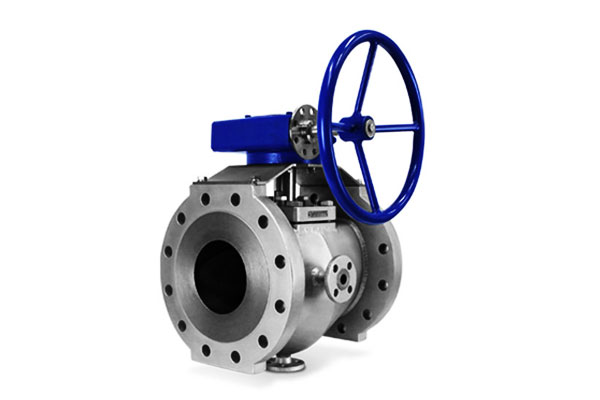
플러그 밸브의 주요 장점
- 연마성 유체 저항: 마지막에 텅스텐 카바이드 시트가 있는 편심 플러그 300% 광산 슬러리의 볼 밸브보다 길다 (광업 공학 저널 기준).
- 저압 강하: 완전 개방형 플러그 밸브는 펌프 에너지 사용량을 기존 대비 10~15% 줄입니다.. 글로브 밸브 (EPA 에너지 스타 데이터).
- 빠른 작동: 1/4 회전 디자인 (0.5자동화 밸브의 경우 –2초) – 비상 정지에 중요 (예를 들어, 유정 폭발).
- 다재: 액체 취급, 가스, -196°C ~ 815°C 범위의 슬러리 – 여러 공정 흐름을 위한 하나의 밸브 유형.
- 새는 성능: 소프트 시트 밸브는 클래스 VI 누출을 달성합니다. (0.00001% 이하) – 값비싼/독성 유체의 손실을 방지합니다..
플러그 밸브의 한계
- 높은 토크 요구 사항: 무윤활 및 금속 시트 밸브는 볼 밸브보다 2~3배 더 많은 토크가 필요합니다. 더 큰 밸브에는 값비싼 공압/유압 액추에이터가 필요합니다..
- 유지 보수 요구: 윤활 밸브에는 분기별로 그리스 주입이 필요합니다. 유지 관리를 놓치면 플러그 바인딩이 발생합니다. (다운타임 사고당 4~8시간).
- 고온 한계: 부드러운 좌석 (ptfe) 260°C 이상에서 성능 저하 - 저온 서비스로 제한됨 (예를 들어, 식품 가공).
- 비용: 편심 및 고성능 플러그 밸브는 볼 밸브보다 비용이 20~50% 더 높으며 열악한 조건에서만 정당화됩니다..
- 큰 고체를 함유한 슬러리: 다중 포트 및 원통형 플러그가 고체로 막힘 >5 mm – 스트레이너 또는 편심 설계 필요.
9. 플러그 밸브의 적용
플러그 밸브는 다른 밸브가 작동하지 않는 열악한 산업 환경에서 탁월한 성능을 발휘합니다..
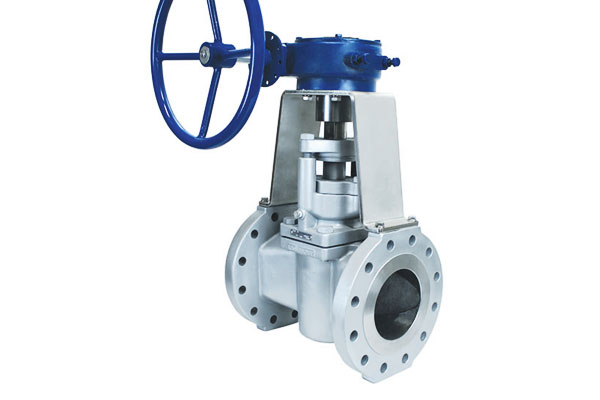
다음은 주요 분야 및 사용 사례입니다.:
기름 & 가스
- 업스트림 (수원): API 6A 윤활 플러그 밸브 (1000 술집, 350° C) 원유 및 산성 가스 규제 – NACE MR0175 규정 준수로 H2S 부식 방지.
- 내의 한복판 (파이프 라인): 편심 플러그 밸브 (6d 화재) 천연가스의 차단 밸브 역할을 합니다. (최대 유량 10,000 m³/h) – 낮은 압력 강하는 압축기 에너지 사용을 줄입니다..
- 하류 (정제소): 중유 및 아스팔트를 처리하는 금속 시트 플러그 밸브 (400° C) – 텅스텐 카바이드 플러그는 코크스 입자 마모에 저항합니다..
물 및 폐수 처리
- 슬러지 처리: 편심 플러그 밸브 (부드러운 좌석, 클래스 VI) 고형물 함량이 20~30%인 슬러지 처리 - 막힘 없음, 60% 볼 밸브보다 가동 중지 시간이 적음.
- 화학물질 투여: 무윤활 플러그 밸브 (PTFE 좌석) 염소/불소 투여량 제어 – 클래스 VI 누출로 수질 오염 방지.
- 담수화: 316L 플러그 밸브는 바닷물을 처리합니다. (538° C) – 내식성이 보장됩니다. 10+ 년 서비스 기간.
화학 및 제약
- 산성 처리: Hastelloy C276 플러그 밸브 핸들 98% 황산 (650° C) – 부식 제로, ISO를 만난다 15848-1 클래스 AH.
- 의약품: PTFE 라이닝 플러그 밸브 (ASME BPE) API 투여량 조절 – 클래스 VI 누출 및 CIP 기능으로 교차 오염 방지.
발전
- 화력발전소: 금속 시트 플러그 밸브는 과열 증기를 제어합니다. (540° C, 200 술집) – 터빈 바이패스 시스템에 사용.
- 원자력 발전소: 316금속 벨로우즈 패킹 핸들이 있는 L 플러그 밸브 붕산 냉각수 – 누출 없음 (클래스 VI) 방사선 방출을 방지.
광업 및 광물
- 슬러리 운송: 편심 플러그 밸브 (텅스텐 카바이드 시트) 광산 광미 처리 (30% 고체) - 300% 고무 라이닝 볼 밸브보다 긴 수명.
- 부양 공정: 고무 시트 플러그 밸브는 거품 부양 화학물질을 제어합니다. 원격 현장을 위한 저렴하고 유지 관리가 쉽습니다..
10. 다른 밸브와의 비교
플러그 밸브는 산업용 유체 제어에 사용되는 여러 밸브 유형 중 하나입니다..
상대적인 강점과 한계를 이해하면 엔지니어가 특정 응용 분야에 가장 적합한 밸브를 선택하는 데 도움이 됩니다..
아래 표를 비교하면 플러그 밸브 다른 일반적으로 사용되는 밸브와 함께:
| 밸브 유형 | 설계 & 작업 | 주요 장점 | 제한 | 일반적인 응용 프로그램 |
| 플러그 밸브 | 포트가 있는 회전식 원통형 또는 원추형 플러그; 1/4 회전 작동 | 단순한, 콤팩트, 완벽한 차단; 낮은 압력 강하; 다중 포트 흐름에 다재다능함 | 대형 사이즈의 경우 수동 조작 토크가 높을 수 있음; 종종 윤활이 필요함; 제한된 조절 | 슬러리, 기름 & 가스, 화학 공정 라인, 흐름을 전환하는 것, 견본 추출 |
| 볼 밸브 | 보어가 있는 구형 볼; 쿼터 전환 | 빠른 작동; 기밀 밀봉; 고압/온도에 적합; 낮은 토크 | 제한된 다중 포트 구성; 침식성 매체에는 적합하지 않음 | 물, 가스 파이프 라인, 화학 라인, 온/오프 애플리케이션 |
| 게이트 밸브 | 좌석 사이의 슬라이딩 게이트; 선형 운동 | 완전히 열리면 최소 압력 감소; 양방향; 큰 직경에 적합 | 느린 작동; 열악한 조절; 부피가 큰; 잠재적인 진동 또는 채터링 | 증기, 물, 오일 파이프 라인; 격리 업무 |
글로브 밸브 |
플러그/시트 또는 디스크/시트 선형 모션; 조절 디자인 | 우수한 흐름 조절; 정확한 제어; 견고한 밀봉 | 더 높은 압력 강하; 더 복잡합니다; 느린 작동; 더 높은 비용 | 프로세스 제어, 화학 식물, 발전, 조절 의무 |
| 나비 밸브 | 회전 디스크; 쿼터 전환 | 경량, 콤팩트; 적당한 조절; 큰 직경에 대한 비용 효율적입니다 | 고압에서 제한된 밀봉 견고성; 연마성 유체에는 적합하지 않습니다. | HVAC, 수처리, 저압 화학 라인 |
| 니들 밸브 | 테이퍼 바늘과 시트; 선형 운동 | 미세한 흐름 제어; 정확한 계량 | 고유량용이 아님; 느린 작동; 작은 크기 | 수단, 견본 추출, 실험실 응용 |
주요 통찰력:
- 밀봉 성능: 플러그 밸브는 다음을 제공합니다. 완벽한 차단 볼 밸브와 유사하지만 다중 포트 흐름을 보다 효율적으로 처리할 수 있습니다..
- 조절 기능: 글로브 밸브 및 니들 밸브와 같은 선형 밸브는 정밀한 유량 제어에 탁월합니다.; 플러그 밸브는 미세한 조절보다는 켜기/끄기 및 전환 작업에 더 적합합니다..
- 압력 강하: 플러그 앤 볼 밸브에는 낮은 ΔP 완전히 열린 위치에서; 글로브 및 게이트 밸브로 인해 상당한 압력 강하가 발생할 수 있습니다..
- 유지관리 및 내구성: 윤활 플러그 밸브는 마모성 또는 부식성 매체에서 정기적인 검사가 필요합니다.; 금속 시트 플러그 밸브는 열악한 조건에서도 장기적인 신뢰성을 제공합니다..
- 다재: 다중 포트 구성의 플러그 밸브는 다음을 수행할 수 있습니다. 여러 밸브를 교체하다 전환기에서, 믹서, 또는 샘플링 시스템, 배관 복잡성 감소.
11. 결론
플러그 밸브는 견고함, ON/OFF에 이상적인 소형 쿼터턴 장치, 우회 및 많은 격리 임무.
성능은 플러그 지지대의 신중한 선택에 따라 달라집니다. (떠 다니는 대 트루 니언), 좌석 유형 (금속 대 탄력성), 재료와 작동.
정밀한 조절을 위한 최선의 선택은 아닙니다., 하지만 빠른 행동을 할 때는, 간단한 구조와 더럽거나 마모성 유체를 견고하게 처리해야 합니다., 플러그 밸브는 종종 가장 실용적인 솔루션입니다..
현대적인 소재, 코팅과 디지털 액츄에이터는 계속해서 적용 가능성을 확장하고 있습니다..
LangHe의 맞춤형 밸브 어셈블리
랑헤 제안 맞춤형 밸브 조립 솔루션, 특정 산업 요구 사항을 충족하는 맞춤형 부품 전문 기업.
고급 캐스팅 활용, 정밀 가공, 소재 전문성, LangHe는 플러그 밸브를 제공합니다, 제어 밸브, 및 기타 밸브 어셈블리:
- 맞춤형 재료: 탄소강, 스테인레스 스틸, 이중, 니켈 합금, 부식성 또는 고온 응용 분야를 위한 고성능 소재.
- 맞춤형 디자인: 단일 포트, 다중 포트, 윤활, 또는 고객 사양에 맞게 설계된 금속 시트 플러그 밸브.
- 정밀 가공: 원활한 작동과 누출 방지 밀봉을 위해 공차가 엄격한 CNC 마감 본체 및 플러그.
- 조립 및 테스트: 완전히 조립된 밸브, ISO를 충족하도록 수압 및 기능 테스트를 거쳤습니다., API, 또는 클라이언트 표준.
랑헤의 맞춤형 서비스는 다음과 같은 산업을 가능하게 합니다. 기름 & 가스, 화학적 처리, 수처리, 그리고 발전 충족하는 밸브를 통합하기 위해 독특한 운영, 공간적, 성능 제약, 신뢰성 보장, 능률, 그리고 긴 서비스 수명.
오늘 LangHe에게 연락하세요 귀하의 정확한 사양에 맞는 밸브 구성품을 설계하고 제조합니다..
FAQ
플러그 밸브와 볼 밸브의 차이점은 무엇입니까?
플러그 밸브는 원통형/테이퍼형 플러그를 사용합니다. (편심 디자인으로 마모 감소), 볼 밸브는 구형 볼을 사용하는 반면.
마모성/부식성 유체에 탁월한 플러그 밸브 (300% 슬러리의 수명 연장), 볼 밸브는 비연마성 밸브의 경우 더 저렴합니다., 고유량 애플리케이션.
연마성 슬러리에 가장 적합한 플러그 밸브 유형?
텅스텐 카바이드 시트가 있는 편심 플러그 밸브 (85-90HRC) 최고야.
편심 디자인으로 플러그가 시트에서 분리됩니다. (미끄러지는 접촉 없음), 텅스텐 카바이드는 고체 마모에 저항하여 수명을 1~2년으로 연장합니다.. 3– 볼 밸브의 경우 6개월.
윤활 플러그 밸브는 얼마나 자주 윤활해야 합니까??
분기별 정상 서비스 중 (기름 & 가스, 물); 연마성 유체에 대해 매월 (채광). 자동 윤활 시스템 (공압 인젝터) 간격을 6~12개월로 연장할 수 있습니다..
플러그 밸브가 고온을 처리할 수 있습니까??
예. 금속 시트 플러그 밸브 (스텔 라이트 6, Hastelloy C276) 최대 815°C까지 처리 (원자력/발전소). 소프트 시트 밸브 (ptfe) 260°C로 제한됩니다..
플러그 밸브의 누출 등급은 무엇입니까?
소프트 시트 플러그 밸브 (PTFE/바이톤) ANSI FCI 달성 70-2 클래스 VI (≤0.00001% 누출) – 독성/고가의 유체에 중요.
클래스 IV를 달성한 금속 시트 밸브 (0.01% 이하 누출) – 고온 서비스에 적합.
플러그 밸브의 토크 요구 사항을 줄이는 방법?
윤활 플러그를 사용하세요 (흑연-PTFE 그리스는 마찰을 감소시킵니다. 50%); 편심 디자인 선택 (플러그를 좌석에서 들어올림); 적절한 배관 정렬을 보장합니다. (바인딩을 피합니다).
